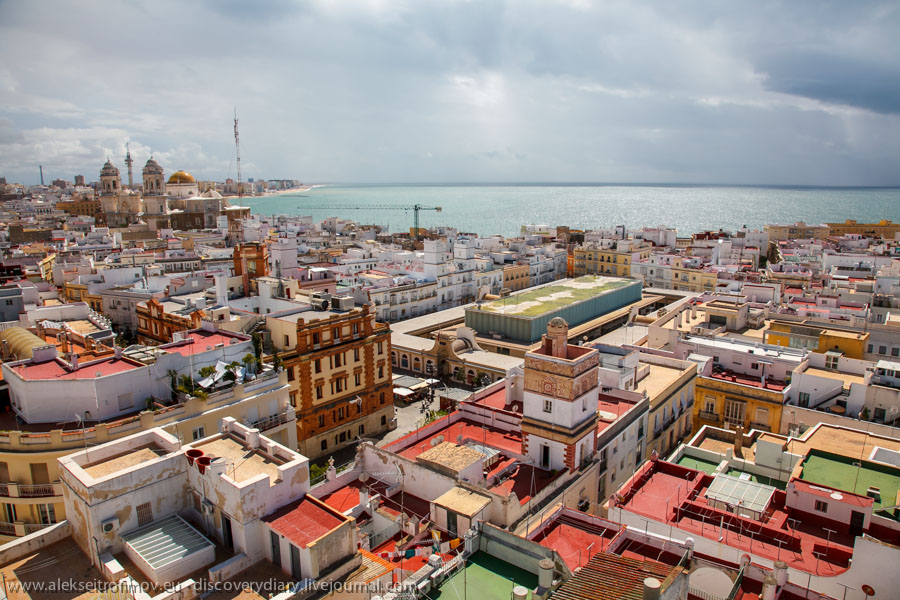Look at Spain and try to imagine the point closest to the ocean. The one point from where you would try to launch a Trans-Atlantic journey. Well, Cádiz would be it. The lower left corner, the one that almost looks achingly (or greedily?) towards the riches of Latin America. This strategic position immediately behind the Pillars of Hercules, as well as its ideal natural harbour, made Cádiz probably the oldest town in Europe. The Phoenicians founded it in the days when the world was still young and no empire had ever set its sights on the European continent.
Cádiz’s location is surreal. Old Cádiz is found on a peninsula connected to the mainland only by a sliver of narrow land. As if a classical ruler had decided in his flight of fancy to build a fairytale city based on a project imagined by a court philosopher. In our days the town no longer fits to the peninsula and has steadily grown towards and onto the mainland.
When Columbus discovered America, the first base where the riches flowed and where they were counted and distributed was Sevilla. Sevilla is the point where the river Guadalquivir loses its navigability, hence that was where the ships had to stop and unload. Later a disaster struck: Guadalquivir silted and the unloading point with all the riches was moved here, to Cádiz, bringing with it an unimaginable wealth. This went on until the fall of the Spanish colonial empire in the beginning of 19th century.
Here in the distance you can see the narrow strip of land that leads towards the mainland (it has the wide sand beach, whereas Old Cádiz only offers a boring and narrow stone beach).

Continue reading Cadiz →